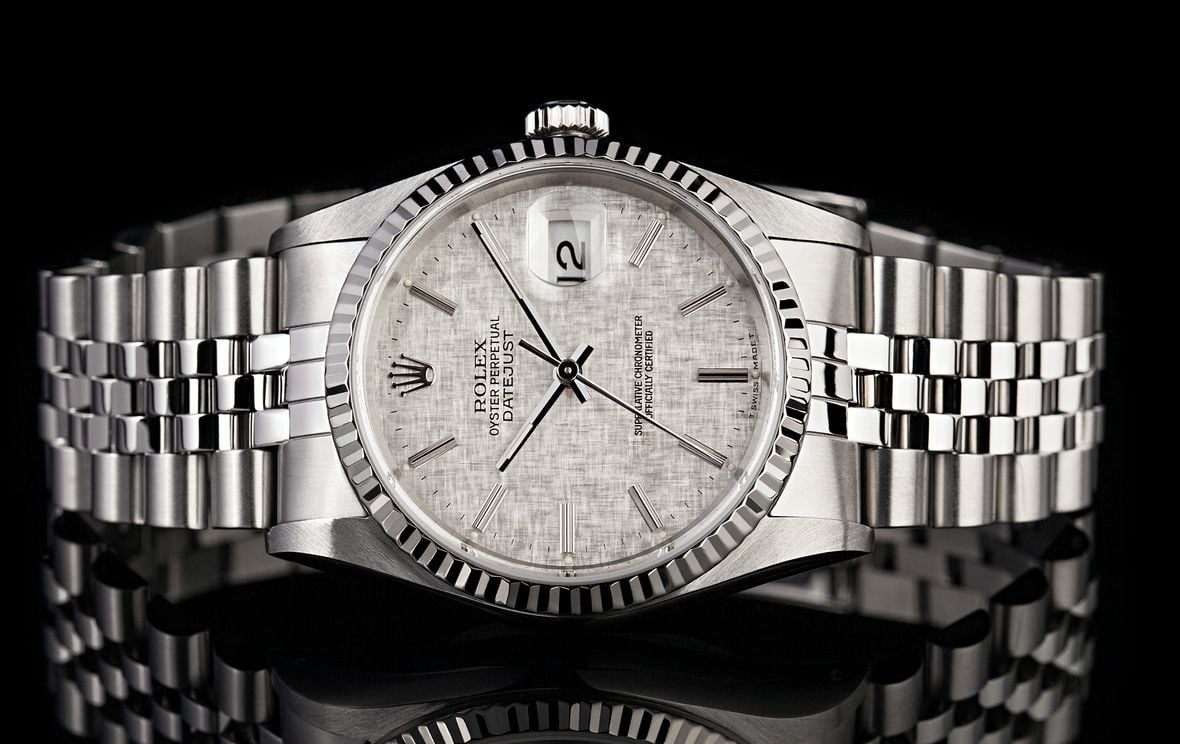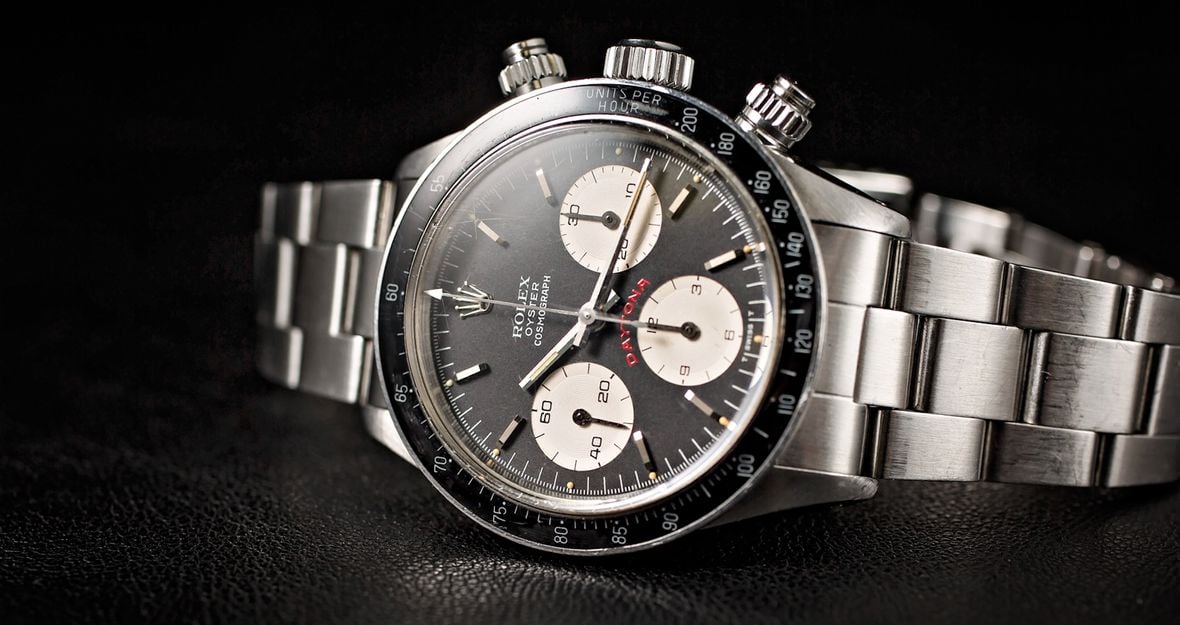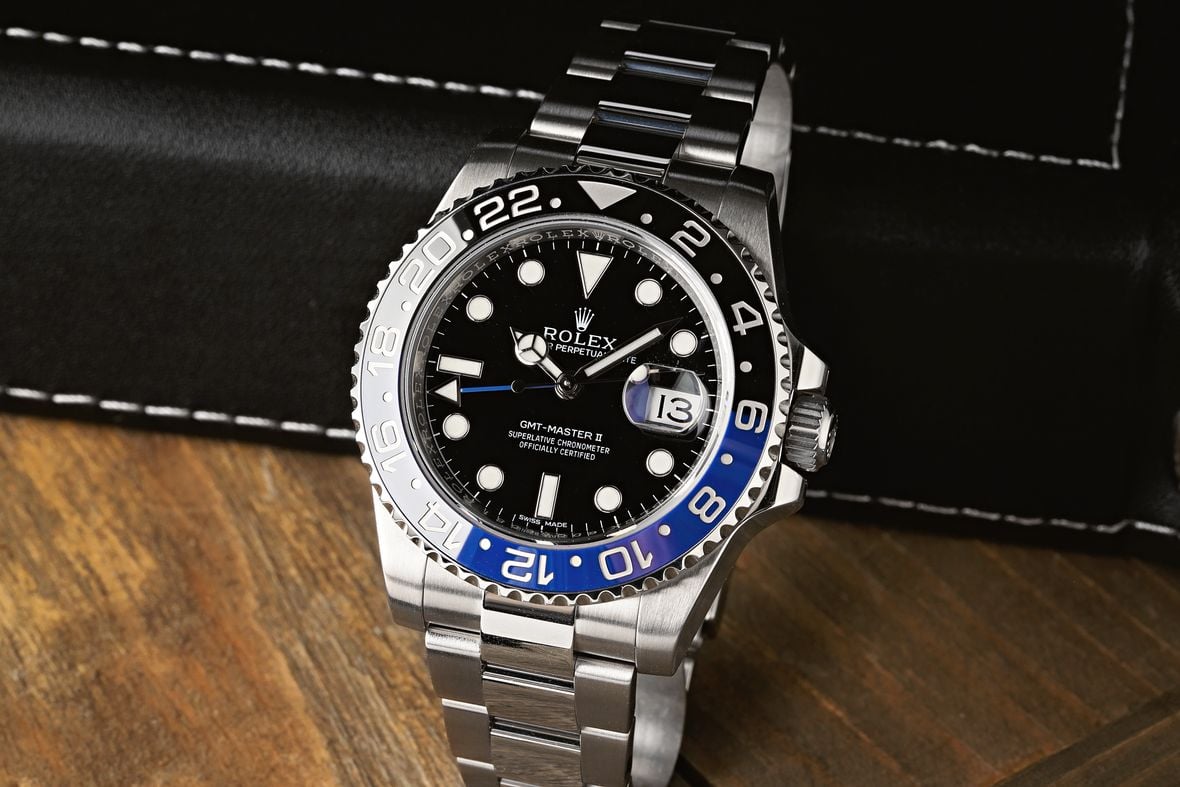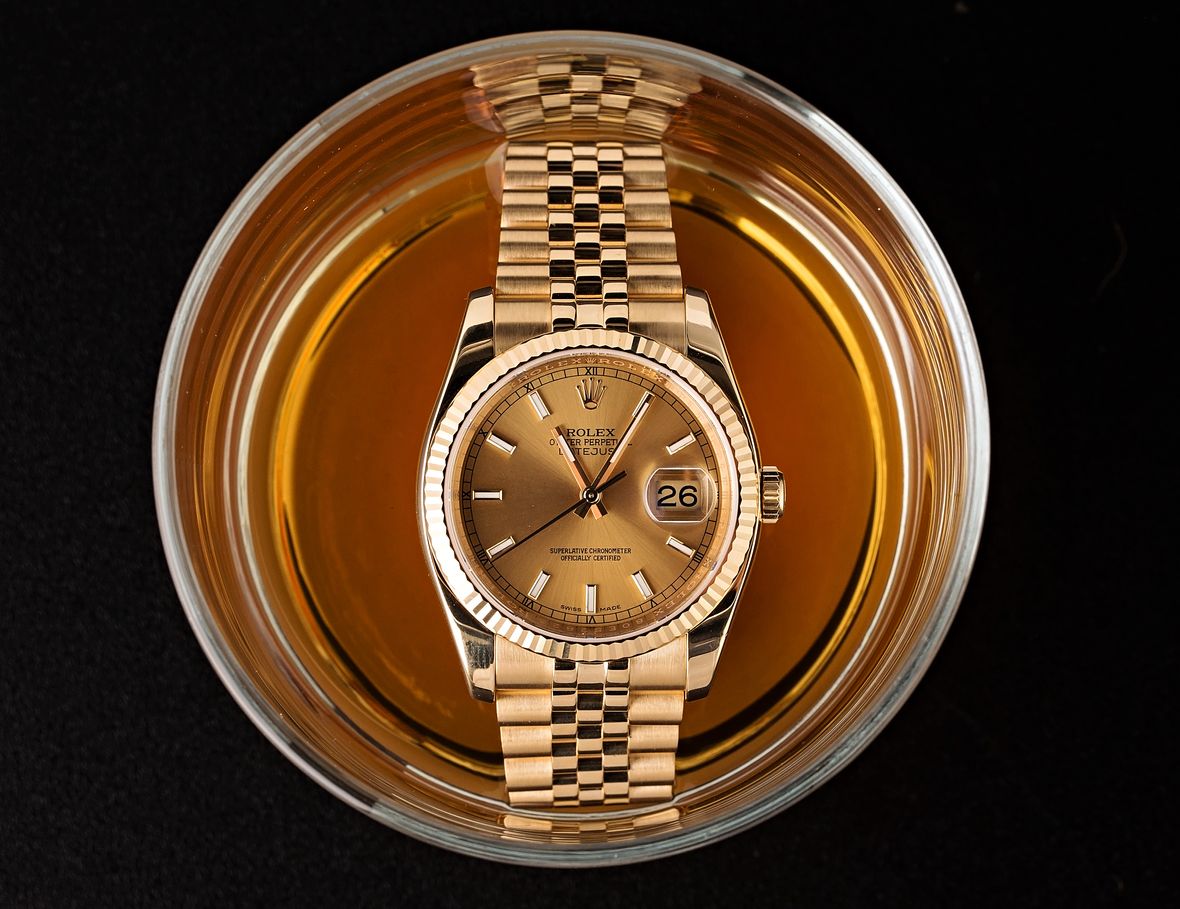The Rolex Datejust is a watch that needs no introduction. Aside from being a product of one of the world’s most recognizable brands, the Datejust is also one of the most successful models in the Rolex catalog and is credited as being the brand’s best-selling watch of all time. The Datejust also boasts one of the longest production runs in Rolex history, first hitting the market in 1945 and continuing to remain in production to this day. Its list of available configurations is vast and includes various bezel and bracelet options, countless dial designs, and multiple different case sizes. With so many options available, that begs the question, why is the Rolex 16014 so special, and why should you consider it for your next Rolex purchase?
Rolex Datejust Reference 16014
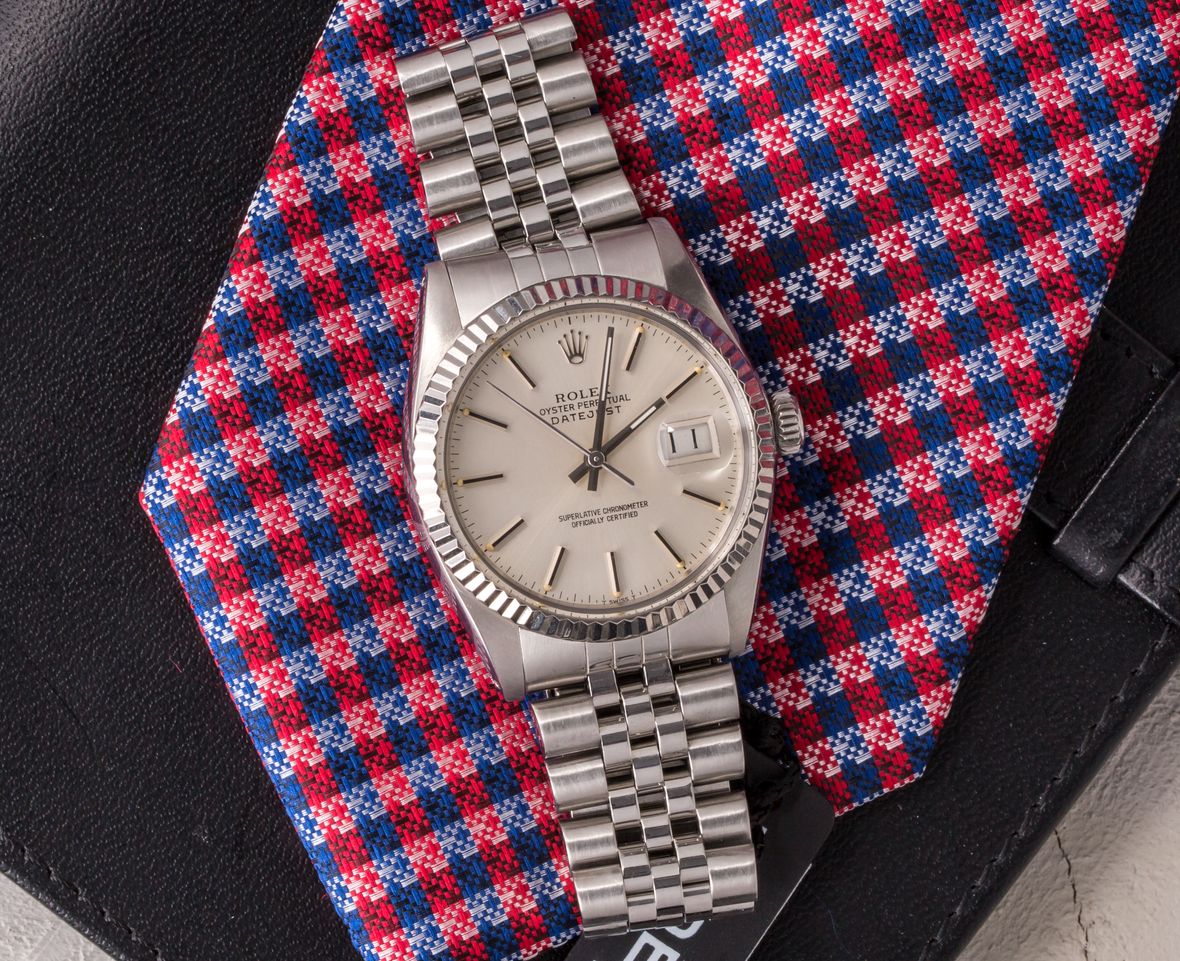
Rolex Datejust 16014 Key Features:
- Reference Number: 16014
- Production Years: 1977 – 1988 (Approx.)
- Case Size: 36mm
- Materials: Stainless Steel & White Gold (White Rolesor)
- Functions: Time w/ Running Seconds, Date Display
- Dial: Multiple Options Available
- Bezel: Fixed, 18k White Gold, Fluted Style
- Crystal: Acrylic (Box Shaped w/ Cyclops Lens)
- Movement: Rolex Caliber 3035
- Water Resistance: 100 Meters / 330 Feet
- Strap/Bracelet: Oyster or Jubilee Bracelet
Why the Rolex Datejust 16014?
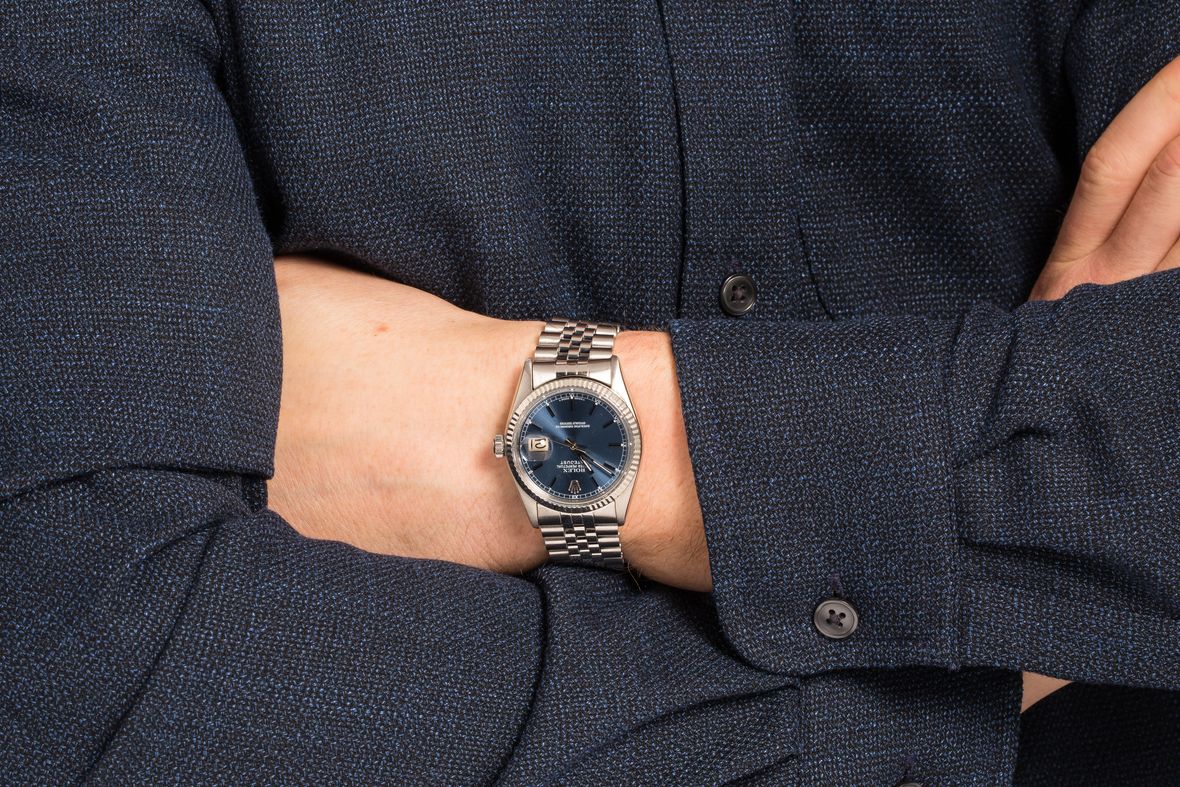
The Rolex Datejust truly is the quintessential Rolex watch, with sleek lines, versatile styling, and impeccable Swiss craftsmanship. Although it has been constantly updated to reflect modern tastes and watchmaking technologies, the current generation’s design has never strayed too far from the core design of the original 1940s model. The date mechanism is ever-present at the 3-hour marker, and a self-winding movement still beats within the case. It’s Rolex’s commitment to the Datejust’s core design that makes the watch such a massive and enduring success.
So why should you choose the reference 16014? The 36mm white Datejust ref. 16014 is a somewhat understated and often overlooked model. The exclusivity that many seek from the Rolex brand is still there, only in a more wearable package that pairs a stainless steel case and bracelet with a matching white gold fluted bezel. If one didn’t know any better, one might think that this reference was only available as a Rolex Datejust stainless steel watch.
The primary use of Rolex Oystersteel also opens the ref. 16014 to a broader range of budgets and often ranks among the most affordable Rolex Datejust watches available. The ref. 16014 offers the excitement that accompanies owning a gold Rolex while simultaneously offering a monochromatic alloy finish – and most importantly, without the price of an all-gold watch.
Rolex Datejust 16014 Movement:
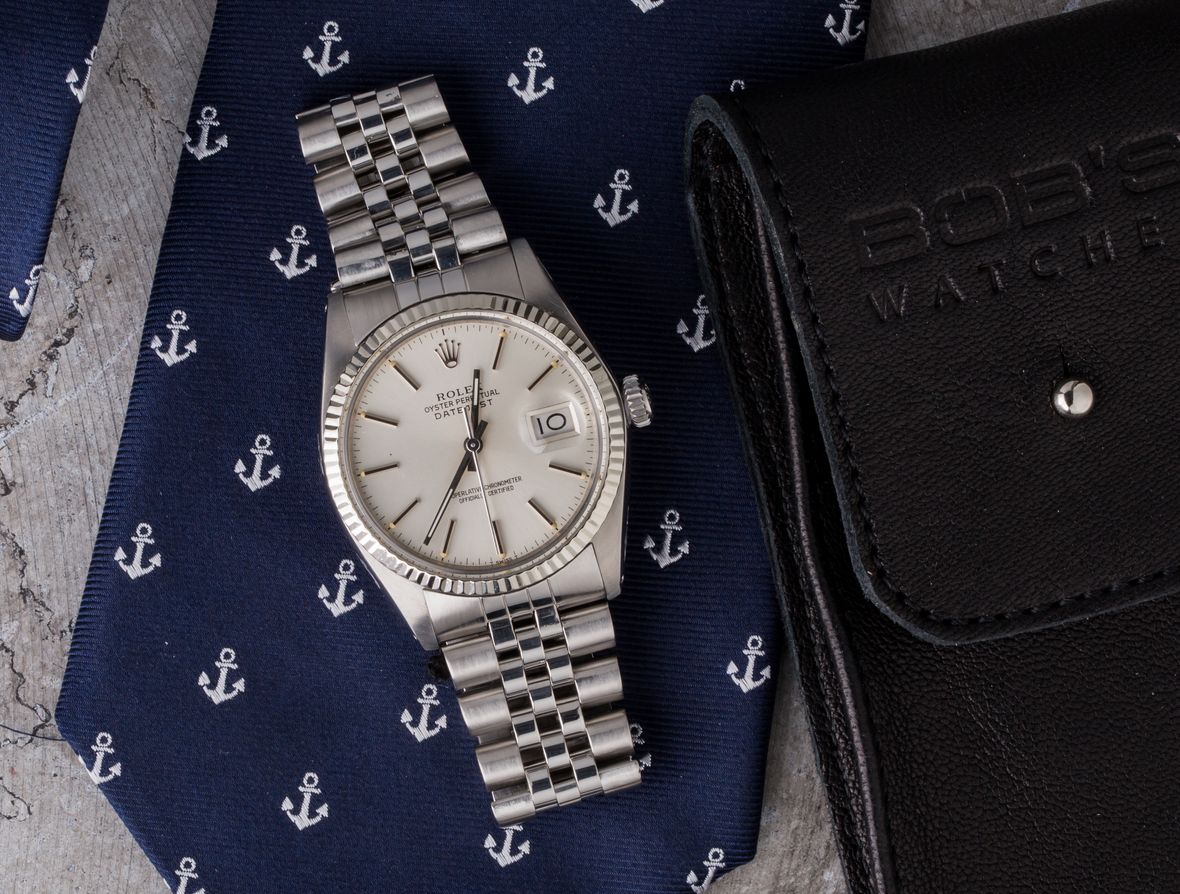
The reference 16014 replaced the Datejust 1601 in the late 1970s. While the Datejust ref. 1601 offered the option for steel and either white or yellow gold (along with solid gold), the Datejust 16014 was produced solely in stainless steel with a white gold fluted bezel. However, side-by-side, the steel and white gold variations of both models are remarkably similar in design with the same 36mm case diameter, iconic fluted bezel, and automatically changing date mechanism accompanied by a Cyclops magnification lens.
Beyond the Rolex pie-pan dial found on the older model, in order to appreciate the most significant difference between these two White Rolesor references, one much look inside the case at the movement. The ref. 1601 is powered by either the Caliber 1565 or Cal. 1575 and ref. 16014 is powered by the Caliber 3035. As a higher beat movement, the Cal. 3035 beats at a rate of 28,800, whereas the Cal. 1565 and Cal. 1575 offer a frequency of 18,000bph and 19,800bph (respectively).
The overall mechanics of both generation movements remains largely the same, with the Caliber 3035 featuring a smoother seconds hand and improved shock resistance. Additionally, the Cal. 3035 introduced the Datejust to the Quickset Date function, a feature that allows the wearer to adjust the date mechanism without disturbing the time-telling hands on the dial. Instead of winding the central hands in a complete 24-hour cycle to change the date, the wearer can simply pull the crown to an additional setting position to switch the date mechanism. This movement is also COSC Certified, just as you’d expect from a Rolex movement.
Rolex Caliber 3035 Key Features:
- 42-Hour Power Reserve
- 27 Jewels
- 28,800 bph
- Time and Date Function
- Quickset Date
- Self-Winding
- COSC Certified
Rolex Datejust 16014 Materials:
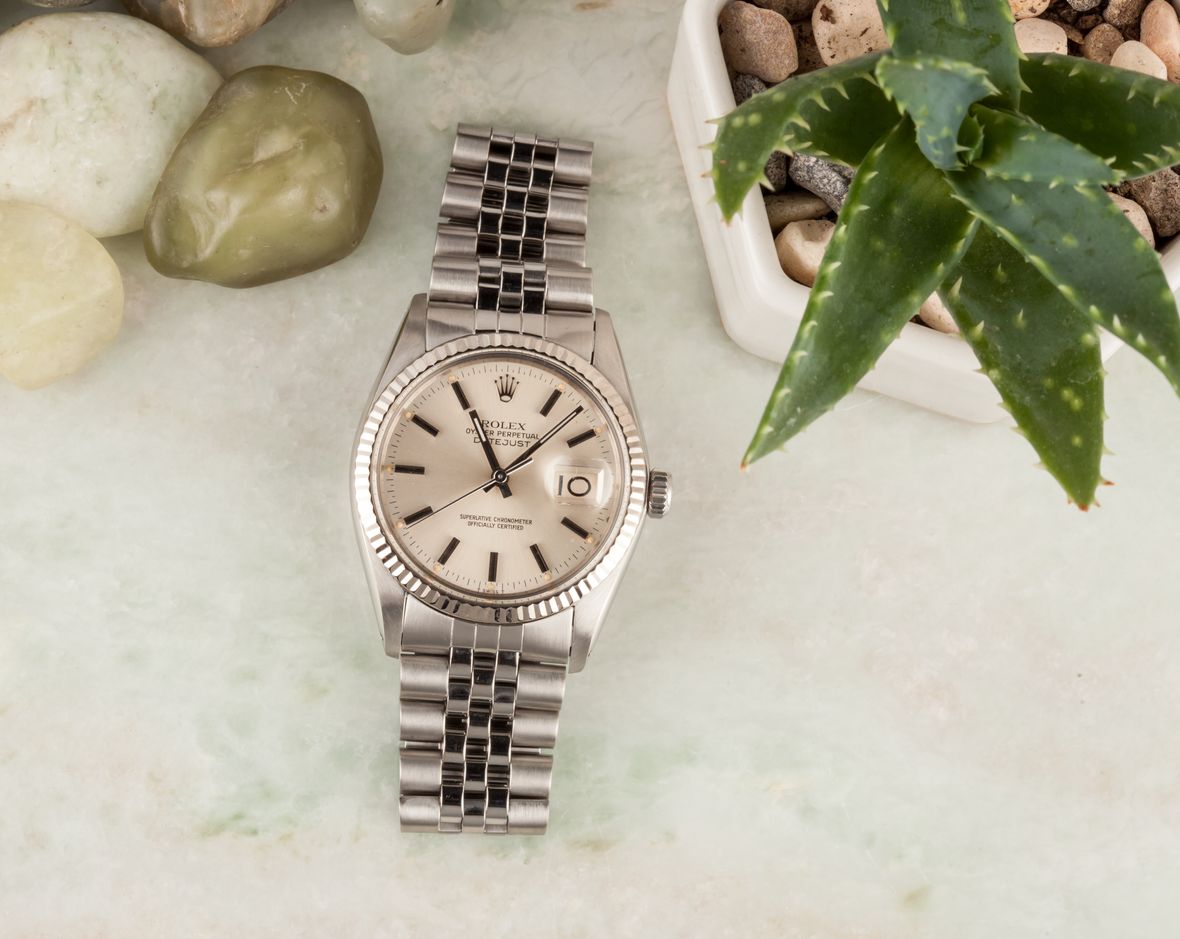
Today, Rolex refers to the pairing of stainless steel with gold as “Rolesor.” The reference 16014 falls under the “White Rolesor” category, with its fluted bezel in white gold and stainless steel throughout the rest of the watch and bracelet. The all-white metal finish is very desirable to many because of its understated versatility. It isn’t too fashion-forward, yet it still exudes a level of sophistication and elegance. Simply put, you wear this Datejust; it doesn’t wear you. Steel and white gold also make for a suitable everyday watch as it fits just about any setting, whether you’re at the office or a black-tie affair.
Rolex fluted bezels are always presented in solid gold, while Datejust bracelets are available in either all-steel, two-tone, or full-gold. The presence of the 18k white gold fluted bezel on the Datejust ref. 16014 instantly signifies the use of precious metal, despite its monochromatic finish. Arguably the single design element that is most emblematic of Rolex watches, the iconic fluted bezel is a major selling point for both first-time buyers and experienced collectors alike.
Rolex Datejust 16014 Case:
Up until 2009, the Datejust was only produced with a 36mm case, after which Rolex introduced the 41mm iterations of the Datejust known as either the Datejust II or Datejust 41. When it comes to the classic Rolex Datejust 36, it’s hard to beat the reference 16014. A fluted bezel surrounds the case, which is also topped with an acrylic crystal for an inherently vintage overall aesthetic.
The case also offers the Datejust’s now-standard water resistance of up to 100 meters. With that in mind, depending on the condition of the individual timepiece and the amount of time since it has had its gaskets replaced, this depth rating may or may not still be intact, so you should always have your watch’s seals checked before you plan on bearing it in the water.
All Rolex Datejust 16014 cases feature lug holes, which make the process of swapping out the bracelet for other strap options significantly easier. Furthermore, the lug width measures 20mm in diameter for the reference 16014, which is a standard and very common width, guaranteeing ample options from most third-party strap manufacturers.
Case measurements:
- 36mm in diameter
- 44mm lug to lug
- 20mm lug width
- 12mm thick (not including Cyclops Lens)
Rolex Datejust 16014 Dial:
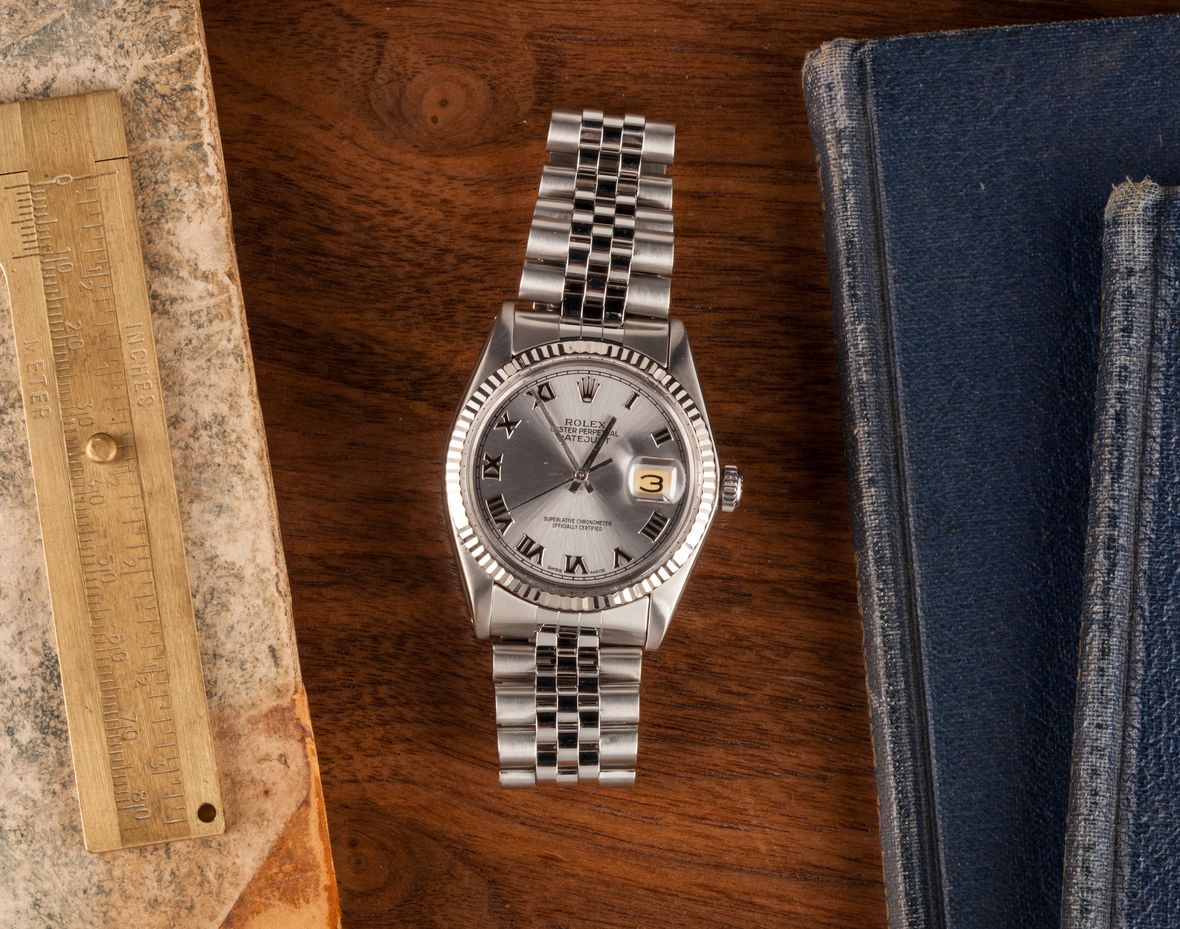
When Rolex developed the Datejust 16014, the brand discontinued the classic Pie Pan dial style seen on its 4-digit predecessors. The term “Pie Pan” comes from the dial’s resemblance to the kitchen baking dish with edges that slope downward and away from the rest of the dial. While this feature is now celebrated for its vintage charm, Rolex ultimately replaced it with the more contemporary flat dial variation seen on the 5-digit series during the late 1970s.
On the secondary market, the Rolex Datejust 16014 is available in a plethora of dial styles, spanning numerous colors and various styles of hour markers. Some of the most common dial color options offered by Rolex during the reference 16014’s production run include white, black, silver, champagne, blue, and grey. Additionally, you will find reference 16014 Datejust watches with dials that have classic baton indexes, Roman numerals, Arabic numerals, or diamond-set hour markers.
Rolex Datejust 16014 Bracelet:
There are three bracelet types fitted to Rolex Datejust watches – Jubilee, Oyster, and Presidential. Rolex typically reserves the Presidential bracelet with its supple, semi-circular links and precious metal finish for the more opulent Day-Date series and only ever fits it to Midsize and Lady-Datejust watches, leaving the Jubilee and Oyster bracelets available to the reference 16014 Datejust.
The 5-link Jubilee bracelet is the dressier option between the two and was specifically designed for the Rolex Datejust. It debuted alongside the inaugural Datejust in 1945, earning its “Jubilee” name after the company’s 40th-anniversary celebration during which the Datejust was unveiled. The Oyster bracelet features a flat 3-link design and is more commonly found within the brand’s sports watch collections. Both bracelet options remain a fixture of the Datejust series today, and both are immediately recognizable designs that are emblematic of the Rolex brand.
The Datejust 16014 bracelet features hollow end-links and center links, solid outer links, and a stamped fold-over clasp. If the Jubilee and Oyster bracelets aren’t quite your style, the design of the case itself with pierced holes in the lugs for the spring-bars, makes it relatively easy to swap the bracelet for a custom or aftermarket option.
How Much Does a Rolex Datejust 16014 Cost?
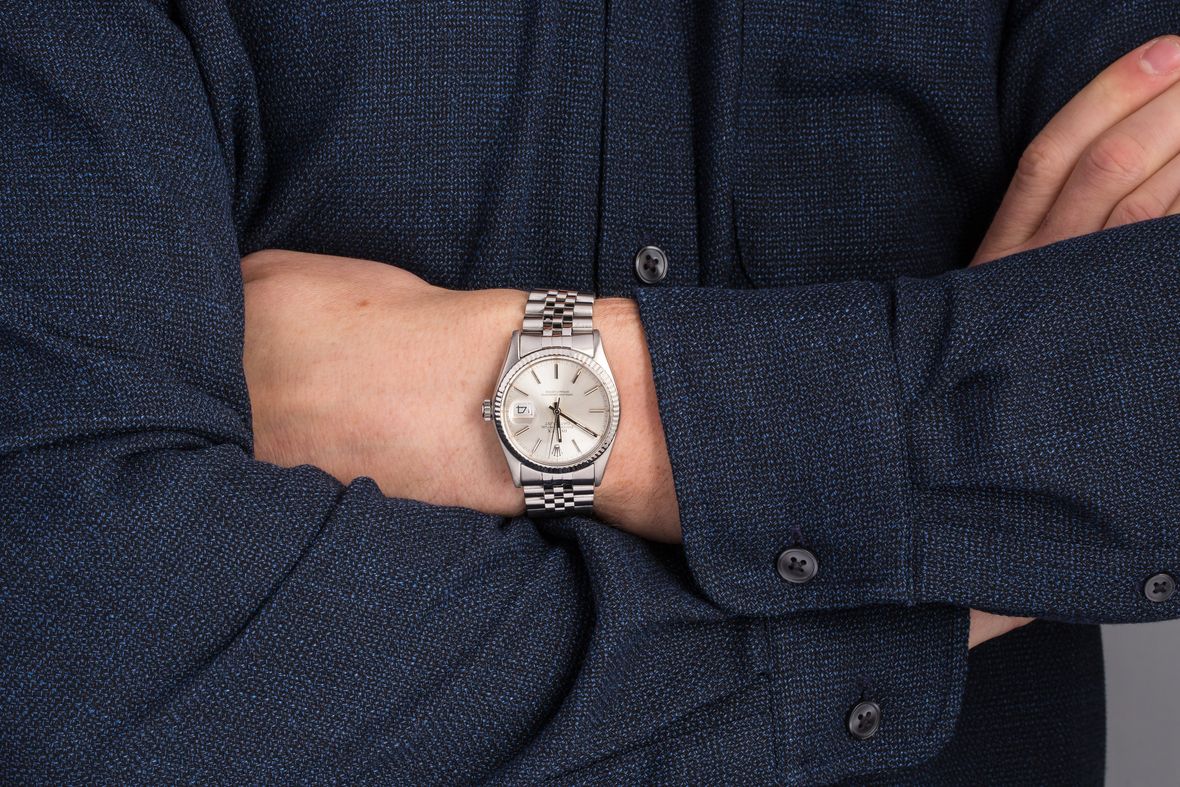
Generally speaking, the Rolex Datejust is positioned as a relatively affordable option on the secondary market, with prices ranging as low as $7k for the all-steel 5-digit references to well over $20k for some examples and those featuring precious metals. On average, you can expect to pay between $7k and $10k for a pre-owned Rolex Datejust.
The Rolex Datejust reference 16014 currently sits steady at around $7k, although prices have been steadily increasing in more recent years. Prices for Datejust 16014 watches can fluctuate depending on factors such as market demand, condition of the individual watch, the presence of all original components, and whether or not the watch in question is still accompanied by its original box and paperwork.
Does Rolex 16014 Hold its Value?
In general, most Rolex watches hold their value incredibly well. If the watch is in excellent condition with all its original parts intact, it should either maintain the same price you paid for it or even increase in value over the years. The Rolex brand’s reputation, exclusivity, and impeccable quality of every timepiece produced by the company contribute to how well Rolex watches hold their value and virtually guarantee a constant demand for them.
Of course, other factors come into play that can significantly influence the value of a particular Rolex watch, such as rarity, year of production, and overall demand. For example, the Rolex Daytona 116500 is in high demand and short supply. Secondary prices have since skyrocketed to more than double their original brand-new retail values. The same can’t be said about the Datejust, but the ref. 116500’s incredible demand speaks volumes to the potential value a Rolex watch can have.
Due to the fact that it is currently among the most affordable Rolex watches, the Datejust reference 16014 stands to increase in value over several years. It has been discontinued for more than three decades, and it is only available on the pre-owned market. In 2017, the average open market price was around $3,500. That price continues to climb steadily, with current 2021 prices ranging between $5k and $6k.
How Can You Tell If A Rolex Datejust Is Real?
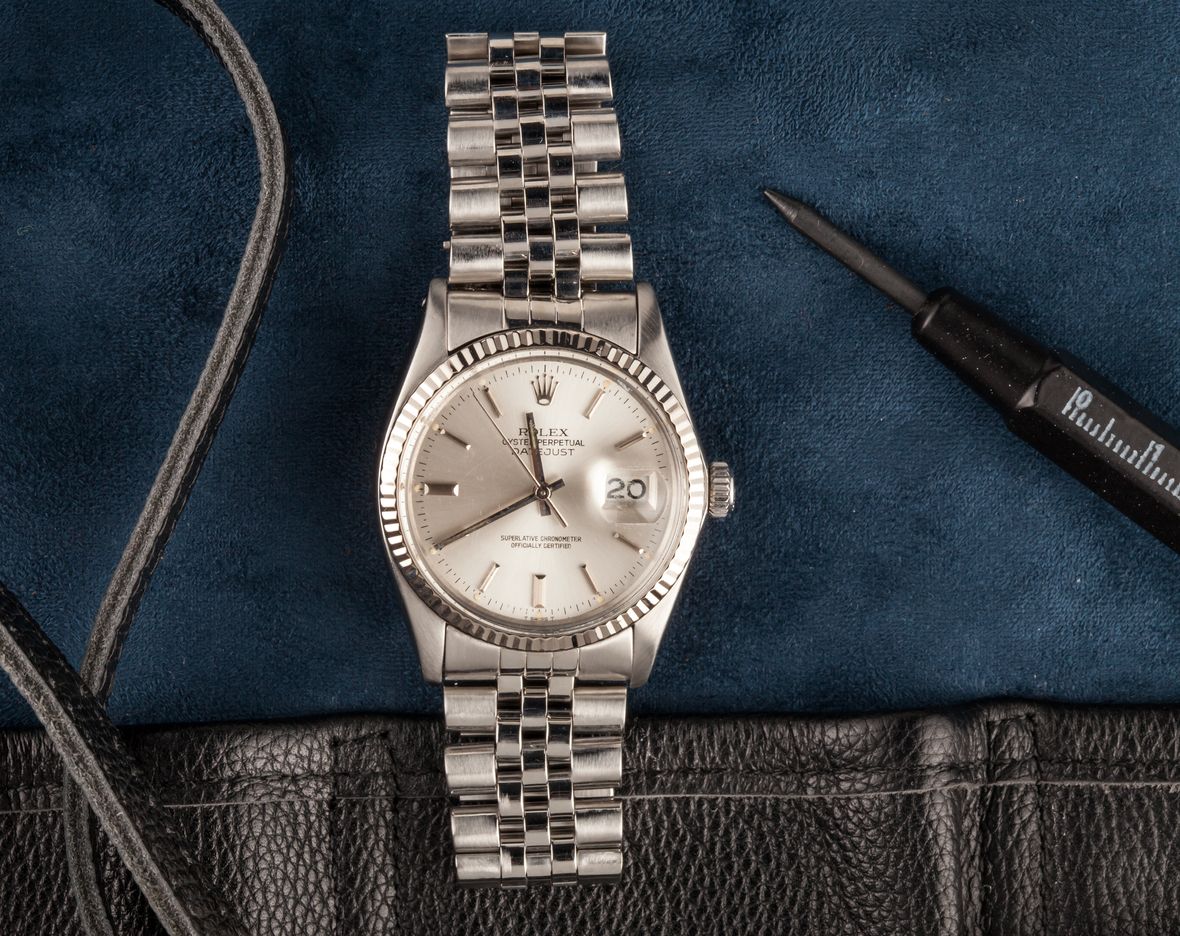
When shopping the secondary market, the question of a watch’s authenticity is paramount. After all, Rolex watches do require a serious investment. Learning how to tell if a Rolex is real can be difficult for new luxury watch collectors. Therefore, it only makes sense that you would take the necessary steps to ensure that the watch you are buying is a genuine Rolex wristwatch. Regardless of existing knowledge or experience level, you can take steps towards determining a Rolex Datejust’s authenticity by following these simple steps.
- Listen to the watch. Unless it is an Oysterquartz Datejust model with a quartz movement and says the name “Oysterquartz” on the dial, if the watch ticks once per second, then it is most likely powered by a non-genuine Rolex movement.
- Look at the Cyclops lens. An authentic Rolex will magnify the date 2.5x with the number displayed squarely under the magnifying lens.
- Check for the serial and model numbers. Depending on the year the watch was produced, these numbers will be presented on the case between the lugs or on the rehaut under the crystal. Rolex engraves the numbers in deep, crisp lines.
- Feel the weight of the watch. Genuine Rolex watches have a certain heft to them that conveys a sense of quality and craftsmanship that is often unmatched by flimsy and cheaply made counterfeits.
- Check for text placement and typos. The text displayed on the dial should be perfectly placed and lacking typos of any kind. The text should also appear crisp and smooth – just like you would expect from a watch worth a minimum of several thousand dollars.
Where can I buy the Datejust 16014?
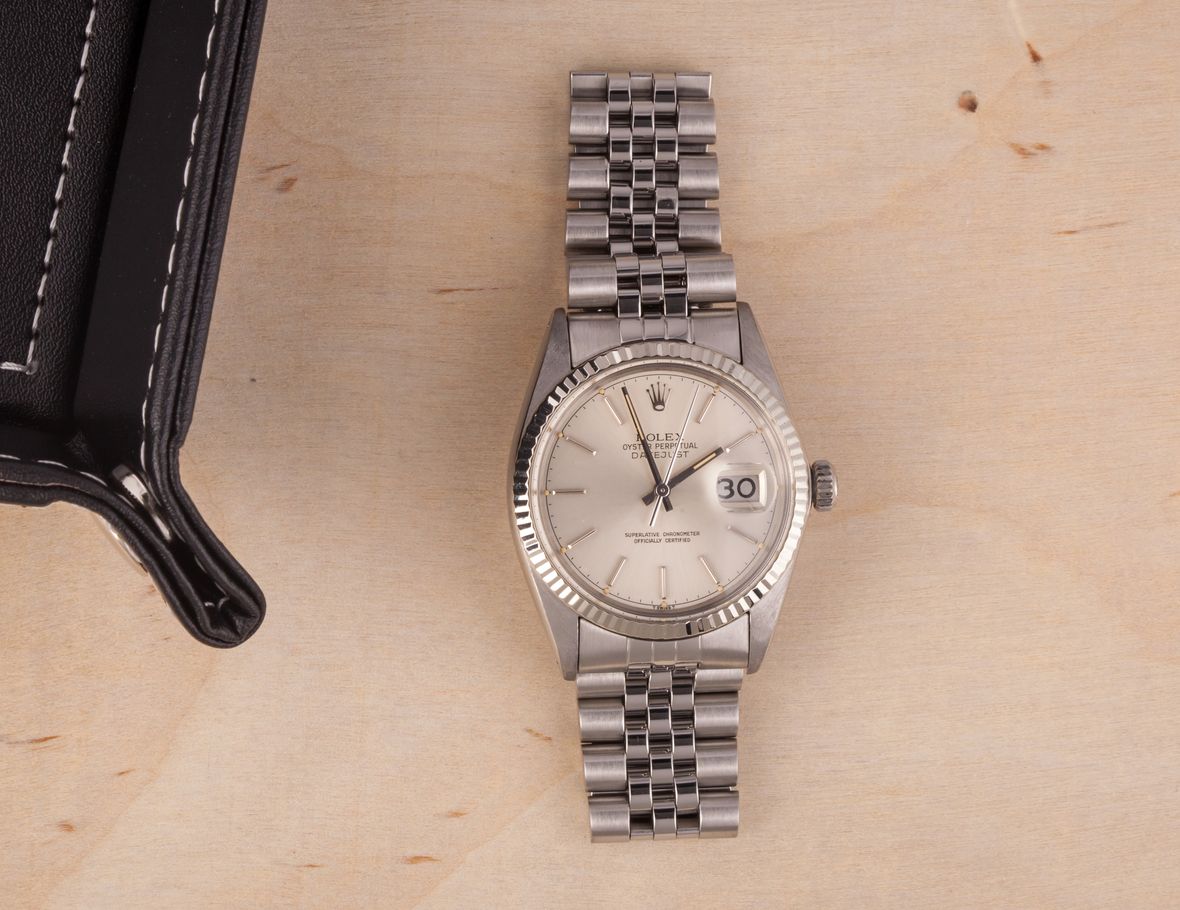
The used Rolex market is the only place that one can buy a Datejust 16014 since the model was discontinued back in the late 1980s. By following the guidelines above, investing in reference 16014 on the secondary market doesn’t have to be an overwhelming process. If you choose a reputable seller, the responsibility of verifying a Rolex watch’s authenticity doesn’t have to land squarely on your shoulders. However, we still recommend asking questions about the wristwatch to ensure it’s the real deal.
With its acrylic crystal and older-style case design, buying a Rolex 16014 for sale can offer much of the same charm as older vintage Rolex models. However, with its flat dial design, high-beat movement, and Quickset Date functionality, the ref. 16014 also offers much of the same conveniences as a modern Rolex Datejust watch. Emblematic of the Rolex brand during the 1970s and 198-s, the Oyster Perpetual Datejust ref. 16014 is a favorite among many avid collectors and enthusiasts. It is timeless, affordable, and versatile, making it an exceptional addition to any luxury watch collection.
